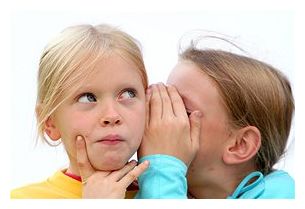
The team of child psychologists and game theorists published their results today in the Proceedings of the National Academy of Sciences.
In their study, a group of 69 children ranging in age from three to nine were engaged in two separate games designed to test their ability to think and act strategically in a social situation.
"One of my areas of interest is in children's ability to protect themselves from misinformation from other people, so I'm naturally interested in children's strategic thinking about other people," says co-author Dr Melissa Koenig, associate professor of child psychology at the Institute of Child Development, University of Minnesota.
The researchers found that children seem to acquire the ability to act strategically based on their assessment of other people's motivations, and learn that they don't always need to trust or tell the truth, at around six or seven years of age.
In the first game -- called 'sender-receiver' -- a piece of candy is hidden in one of two boxes. The sender knows the location of the candy but the receiver does not. The sender points to one of the boxes, not necessarily the box containing the candy. The receiver then selects a box.
If the receiver finds the candy, they get to keep it, and if not, the sender gets the candy, so the sender has an incentive to deceive the receiver if they think the receiver will believe the deception.
"We were very interested in the sender-receiver game -- where you can deceive the player or you can distrust or you can tell the truth or you can trust -- there we were interested in whether sophistication might emerge earlier in one of the two roles, either sender or receiver," says Koenig.
"We predict that lying would emerge first before distrusting and that's what we found."
In the second game involving stickers, the child and the experimenter must simultaneously pick a number of stickers between one and five. Whoever selects the fewest number of stickers gets to keep that number of stickers while the other player receives nothing, but if both players select the same number, neither get any stickers.
"Between the ages of six-and-a-half and eight years, all children select one sticker, the smallest possible number, in the first round," the researchers write.
"This choice is the most sophisticated move for a player who considers each round in isolation."
Koenig says the emergence of this kind of strategic sophistication at this age may reflect a change in social interactions as children spend more time at school and with their peers.
"Even at kindergarten age, children still very much depend on their parents or their mother for a certain amount of regulation and social regulation of activities.
"Then, by grade 1 to 2, they've been in a purely peer-related social milieu for a period of time so they've been swimming on their own more than they were a year or two before." says Koenig.
"They're not seeing a bunch of benevolent caretakers any more, but it's not the Lord of the Flies either."



Reader Comments
to our Newsletter